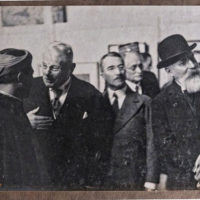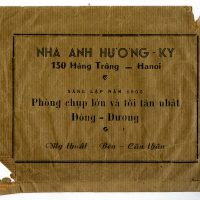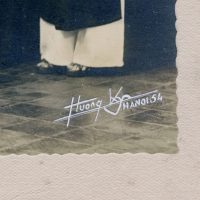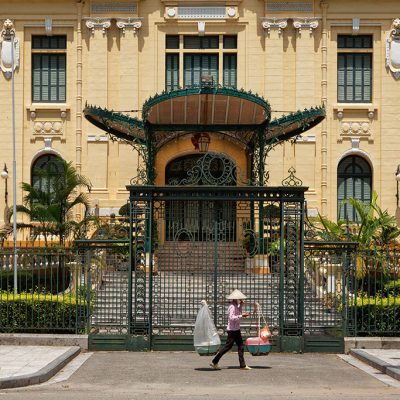Photos by Huong Ky Studio – Emperor Bao Dai and Victor Tardieu visiting Indochina Fine Art School in 1932
This never published series of photos are taken from the album “”Respectful homage of the house Huong Ky Photo to Mr. The Minister of National Education in memory of the trip of H.M BAO DAI in Tonkin”.
Gallery Inlen Photo is proud to be the first to show them publically in collaboration with the French galerie Vincent Joly dedicated to Indochina arts for the the centenary of the founding of Indochina School of Fine Arts (1924-2024) now the University of Fine Arts of Hanoi.
Emperor Bao Dai returned to Indochina on September 8, 1932, after nine years of education in Paris, His arrival in Hanoi prompted grand celebrations including military reviews, horse races, and visits to local schools and businesses.
These photographs offer a remarkable glimpse of The Indochina School of Fine Arts, founded by Victor Tardieu in 1924 who accompagned Emperor Bao Dai and Governor General Pierre Pasquier in this visit.
One of the inaugural students of the Indochina School of Fine Arts was the renowned painter Nguyen Phan Chanh. The accompanying portfolio, published in L’Illustration magazine in 1932, features a text by Jean Tardieu, the son of Victor Tardieu. In his writing, Tardieu sheds light on the current state of Vietnamese art, as well as the challenges it faced during the era of modern art. This insightful commentary underscores the complexities and transformations within the artistic landscape of Vietnam at that time.
“MODERN ANNAMITE ART
In its issues from Number 1928 and Christmas 1930, L’Illustration had, as we remember, reproduced some masterpieces of classical Japanese art. Today, it presents to its readers four silk paintings by one of the most representative disciples of the Hanoi school, which is currently a remarkably active center of a renaissance in Annamite art. It is, of course, out of the question to imagine any fanciful analogy between these two arts that are so distinctly different from each other: the ancient art of Japan and modern Annamite art. However, while they may not be comparable, they are at least related, as they owe the essence of their conception of form and their technique to a common master: Chinese art.
The Hanoi school, which is both an “art school” with its own status and program and an “artistic school” in the sense of the “Northern Chinese school,” has managed, in just a few years, to achieve the dual miracle of reviving the half-dead traditions of Annamite art (mainly those of local architecture) and creating this art where it had not yet found its own expression, particularly in the fields of painting and sculpture.
The artists of this young school draw their inspiration from their most spontaneous feelings: attachment to their native land, to the ancestral customs of Annam, to its religion, its legends, and its history, as well as to the hopes of this nation whose value and personality are increasingly asserting themselves each day. At the sources of the civilization and culture of their race, they naturally and effortlessly rediscover the Chinese tradition, always ready to provide new direction to their creative impulse.
This renaissance, however, and partly this birth of a national art, is not only observed in painting, sculpture, or architecture. The founding director of the school, Mr. Victor Tardieu, after giving Annam the opportunity to create an elite of artists, is at least as concerned about the influence that this elite is expected to exert on artisanal production—silk, lacquer, ceramics, goldsmithing industries, etc.—which still thrives in the form of “family workshops.” At the forefront of the painters in Hanoi is Nguyen Phan Chanh. This young artist, born in Ha Tinh, Annam, was, before entering the school in 1925, a teacher in his country. He is among the young Annamites who have not abandoned the study of “characters.” Remaining faithful to the culture of his country is undoubtedly a significant factor in the authenticity of his talent. Through the work of Chanh and other equally remarkable artists of his generation, the people of Annam attain the status of those celebrated by art, not far from those artisans captured by Japanese painters in the hundred thousand gestures of their tasks.”
More insights

About the archives
These documents are from our exclusives personal archives and the photo album of Huong Ky Studio is available for sale at our partner Vincent Joly Gallery








































